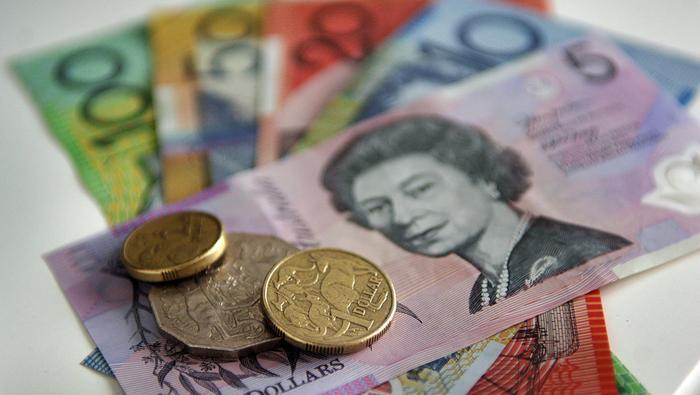2024-07-24 08:14
Euro (EUR/USD) Weakens After German PMIs Disappoint, Rate Cut Expectations Rise German PMIs miss forecasts, manufacturing sector weakens further. Euro slips lower as rate cut expectations increase. According to the latest HCOB flash PMIs, ‘Germany’s private sector economy slipped back into contraction at the start of the third quarter, weighed down by a worsening performance across the country’s manufacturing sector…there was also a further weakening of the labour market amid a broad-based decrease in employment.’ Commenting on the data, Dr. Cyrus de la Rubia, Chief Economist at Hamburg Commercial Bank (HCOB), said: ‘This looks like a serious problem. Germany’s economy fell back into contraction territory, dragged down by a steep and dramatic fall in manufacturing output. The hope that this sector could benefit from a better global economic climate is vanishing into thin air. With the composite PMI now below 50, our GDP Nowcast predicts that economic output will shrink by 0.4% in the third quarter compared to the second quarter. While it is still early days and many data points are yet to come, the second half of the year is starting on a very weak note.’ HCOB Flash German PMI Report ECB rate cut expectations moved higher after the data release, with expectations for a September rate cut increasing to just over 65%. If there is no move in September, then a cut at the October 17 meeting is fully priced in. Financial markets are also suggesting another 25 basis point cut at the December meeting. ECB Interest Rate Probabilities EUR/USD is slipping lower and is heading towards a cluster of simple moving averages sitting between 1.0812 and 1.0833, and these will need to hold to protect 1.0800. Below here, a group of recent lows around 1.0668 comes into view. As things stand, it looks unlikely that EUR/USD will test 1.0900 or above in the short term. EUR/USD Daily Price Chart Chart using TradingView Retail trader data shows 41.98% of traders are net-long with the ratio of traders short to long at 1.38 to 1.The number of traders net-long is 11.02% higher than yesterday and 28.80% higher from last week, while the number of traders net-short is 11.47% lower than yesterday and 16.15% lower from last week. We typically take a contrarian view to crowd sentiment, and the fact traders are net-short suggests EUR/USD prices may continue to rise. Yet traders are less net-short than yesterday and compared with last week. Recent changes in sentiment warn that the current EUR/USD price trend may soon reverse lower despite the fact traders remain net-short. What is your view on the EURO – bullish or bearish?? You can let us know via the form at the end of this piece or you can contact the author via Twitter @nickcawley1. https://www.dailyfx.com/news/euro-eur-usd-weakens-after-german-pmis-disappoint-rate-cut-expectations-rise-20240724.html
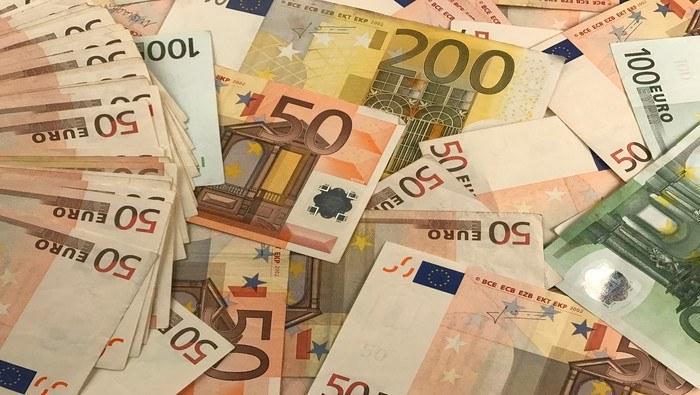
2024-07-23 16:00
When will Meta report its latest earnings? Meta is scheduled to report its second quarter (Q2) earnings after the market closes on Wednesday, July 31st, 2024. What should traders look out for? Last quarter, Meta reported a revenue beat of $36.46 billion vs. $36.16 billion expected and an EPS beat of $4.71 per share vs. $4.32 expected. The company reported the following key numbers. Family daily active people (DAP) – DAP was 3.24 billion on average for March 2024, an increase of 7% year-over-year. Ad impressions – Ad impressions delivered across Family of Apps increased by 20% year over year. Average price per ad increased by 6% year over year. Headcount fell to 69,329 as of March, a 10% decrease year over year. Meta founder and CEO Mark Zuckerberg noted the strong start to the year and said, "The new version of Meta AI with Llama 3 is another step towards building the world's leading AI. We're seeing healthy growth across our apps and we continue making steady progress building the metaverse as well." Nonetheless, Meta’s Q1 2024 earnings report met with a cool reception. Its share price dived 16% in after-hours trading as investors focused on its Q2 2024 sales forecasts, at the lower end of analysts' estimates and after it said it expects its 2024 capital expenses to be higher than anticipated due to its investments in AI. Chart - Family Daily Active People (DAP) in billions Source Meta Meta Earnings – What to Expect During its Q1 Earnings report, Meta said it expected Q2 2024 revenues to be between $36.5 billion to $39 billion. The midpoint of the range, $37.75 billion, would represent 18% year-over-year growth and is just below analysts’ average estimate of$38.3 billion. The company also said that it expected total expenses in 2024 to be $96-99 billion – more than previously forecasted due to higher infrastructure and legal costs. Full-year 2024 capital expenses are expected to be in the range of $35-$40 billion, up from the prior range of $30-$37 billion as the company continues to “accelerate our infrastructure investments to support our artificial intelligence roadmap.” Key Financials - Summary Revenue: $38.29 bn vs $36.46bn in Q1 2024 EPS: $4.70 vs $4.71c in Q1 2024 Chart - Meta Sales Revenue by User Geography Source Trading Economics What else to watch for? Advertising Performance - Advertising revenues increased by 27% in Q1. The market will look for a similar performance in Q2 2024. User Engagement Metrics – DAP reached 3.24 billion on average in March 2024, a gain of 7% year over year. Investors will be looking for continued growth in this area. AI integration and impact - Meta emphasised AI integration in its products, contributing to strong financial results in Q1.Look for updates on how AI is improving user engagement, particularly in areas like Reels, where AI-powered recommendations have led to an 8-10% increase in watch time. Expenses and profitability - Meta increased its capital expenditure outlook for 2024 to between $35 billion and $40 billion.Watch for any further increases to expense projections and their impact on profitability. Reality Labs performance – Reality Labs includes virtual, augmented, and mixed reality related consumer hardware, software and content used in developing the MetaVerse. Analysts expect the division to show an operating loss of $4.31 billion for the quarter as it continues to bleed cash. Forward guidance—Investors will look for guidance on Meta's outlook for Q3 and the rest of 2024, as this will provide insights into the company's expectations for growth and challenges in the coming months. Meta Shares Technical Analysis Meta’s share price soared 194% in 2023, reclaiming all and more of the losses it suffered in 2022 after hitting a low of $88.09. Meta has extended its gains in 2024, reaching a fresh record high of $542.81 in early July. Notably, the high was made on selling, with the Meta share price falling 15% in the following two weeks. Meta Weekly Chart Turning to the daily chart, while Meta’s share price has been able to ride the AI tech frenzy higher in 2024, we note the bearish divergence that occurred at the early July $542.81 high, evident via the RSI indicator. Bearish divergence and the possibility of a completed five-wave Elliott Wave advance from the $88.09 low to the $542.81 high indicate that Meta’s share price may have already entered a correction. This could see Meta’s share price test support in the $426/$414.50 area, which includes the 200-day moving average and the April $414.50 low. Buyers would be expected to be operating in this support region, in anticipation of the uptrend resuming. Meta Daily Chart Summary Meta is scheduled to report its second quarter (Q2) earnings after the market closes on Wednesday, July 31st, 2024. While expectations are high, the technical picture suggests that the Meta share price may have entered a correction which may offer better buying levels before the uptrend resumes. Source Tradingview. The figures stated are as of July 22nd, 2024. Past performance is not a reliable indicator of future performance. This report does not contain and is not to be taken as containing any financial product advice or financial product recommendation. https://www.dailyfx.com/news/meta-q2-2024-earnings-preview-steady-growth-and-a-focus-on-its-ai-story-20240723.html
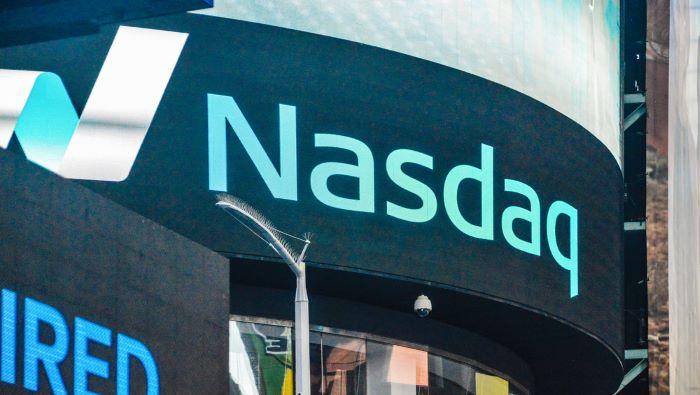
2024-07-23 14:08
Ethereum (ETH) Spot ETFs Up and Running Ethereum spot ETF inflows are expected to be limited compared to Bitcoin spot ETFs No Ethereum staking rewards are on offer, ETH supply is unlimited Ethereum spot ETFs are set to begin trading today, giving a larger audience a second cryptocurrency exchange-traded fund to look at after Bitcoin spot ETFs hit the market in early January this year. All nine ETFs start trading today and while there is likely to be demand for these products, it is unlikely to be on the same scale as the Bitcoin spot ETF launch. Via Bloomberg There remain a number of major differences between Bitcoin and Ethereum with BTC seen as digital money while ETH is seen as a global application platform. The supply of Bitcoin is fixed at 21 million, while Ethereum’s supply is technically unlimited. The fixed issuance/halving of Bitcoin is seen as a major selling point, while the ability of the Ethereum Foundation to issue new ETH if/when needed reduces the scarcity factor and allure for some investors. In addition, current holders of Ethereum tokens are able to ‘stake’ their tokens, while the new ETFs do not have a staking option due to SEC concerns. Ethereum's staking system offers users an opportunity to actively participate in network security while earning rewards. Ethereum holders can stake their ether tokens, contributing to the operation and security of the network. In return for their participation, stakers receive new ether tokens and transaction fees, effectively a yield on their staked money. The current Ethereum staking yield is around 3.2%. Ethereum Staking Rewards and Options Via Bitcoin.com With a new flow of demand expected, Ethereum is likely to move higher but gains may be limited in the short-term as other macro drivers dominate the landscape, in particular the upcoming US elections. In the longer term, and especially if spot ETH staking is approved, the price of Ethereum should move higher and break the November 2021, all-time high at $4,898. Ethereum Weekly Price Chart What is your view on Ethereum – bullish or bearish?? You can let us know via the form at the end of this piece or contact the author via Twitter @nickcawley1. https://www.dailyfx.com/news/ethereum-eth-spot-etfs-up-and-running-20240723.html
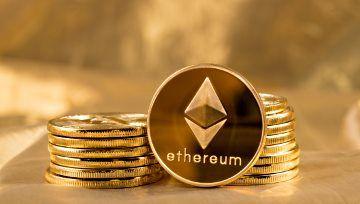
2024-07-23 08:15
Retail Trader Sentiment Analysis – USD/JPY, EUR/JPY, and AUD/JPY Gauge market dynamics by examining sentiment indicators, position ratios, price fluctuations, and technical signals to determine prevailing bullish or bearish trends. Recent market data indicates notable performance variations among key currencies, with the Japanese yen showing relative strength while the Australian dollar underperforms. The following analysis examines current retail trader positioning and its potential implications for future price movements, utilizing a contrarian approach. USD/JPY Retail Trader Data: Bullish Bias Current retail trader data reveals a short-to-long ratio of 2.07 to 1, with 32.57% of traders holding net-long positions. Net-long traders have increased by 0.70% since yesterday but decreased by 3.68% over the past week. Conversely, net-short traders have risen by 6.94% since yesterday and 3.96% over the week. This positioning suggests a USD/JPY bullish contrarian bias. AUD/JPY Retail Trader Bias: Bearish Continuation Retail trader data shows a short-to-long ratio of 1.39 to 1, with 41.91% of traders in net-long positions. Net-long traders have increased by 8.23% since yesterday and 47.41% over the week, while net-short traders have marginally increased by 0.42% since yesterday but decreased by 24.76% over the week. While the net-short position typically indicates potential price increases, recent shifts in sentiment suggest the AUD/JPY trend may continue lower despite the fact traders remain net-short. EUR/JPY Retail Trader Data: Bearish Bias Current data indicates a short-to-long ratio of 2.44 to 1, with 29.09% of traders holding net-long positions. Net-long traders have increased by 9.24% since yesterday and 13.56% over the week, while net-short traders have risen by 2.30% since yesterday but decreased by 8.41% over the week. Despite the overall net-short position suggesting potential price increases, recent sentiment changes may indicate a bearish continuation. This analysis provides valuable insights for market participants to consider when formulating trading strategies. However, it is crucial to combine this information with other analytical tools and market factors for comprehensive decision-making. https://www.dailyfx.com/news/retail-trader-sentiment-analysis-usd-jpy-eur-jpy-and-aud-jpy-20240723.html

2024-07-22 15:00
Article by IG Market Analyst Hebe Chen Alphabet's Earnings: What to expect Alphabet’s consensus EPS forecast for the second quarter of the year is $1.85, a slight decrease from the previous quarter at $1.89, but still a 28% increase compared to the same quarter last year. Total revenue is projected to reach $84.3 billion, reflecting a 4% increase from the first quarter and a 13% rise over the year-ago period. Based on the company's actual results over the past four quarters, Alphabet has delivered an average upside surprise of 10.62%. Source: Nasdaq Alphabet's Earnings: Key watches Google Cloud, Alphabet’s revenue powerhouse, has skyrocketed more than threefold in the past quarter (as table below) and shows no signs of slowing down. With diversified revenue streams on the horizon, the booming demand for Google’s cloud services is set to be supercharged by its unwavering commitment to AI development, which keeps clients firmly locked into its ecosystem. When it comes to AI, the hot topic investors are eagerly watching, the spotlight will be on how generative AI is rolled into Google’s market-leading search and cloud services. Moreover, all eyes will be on how the tech giant is turning their massive AI investments into profits, with their quarterly results set to reveal this crucial step. Alphabet share price technical analysis Alphabet’s earnings report arrives just as the market begins shifting away from high-flying tech stocks, following this year’s impressive rally. Alphabet's stock has surged 28% up until July 22nd. However, the recent rotation away from tech has pulled the price back to its 50-day moving average, raising the risk of a correction, with the price now 10% below its recent peak. The crucial price point to watch around the earnings date will be at $172. This level represents a 10% decline from its recent peak of $191. Additionally, the weekly chart shows this as a key juncture, where the April peak and the previous resistance-turned-support trendline converge, offering double layers of support. If this support level breaks, the price could slide towards $158-$162, the gap left by the previous earnings date. In respect to near-term resistance, we expect pressure around the 50-day moving average at $178, which also aligns with the May peak. Above that, the 20-day moving average at $184 will be the next level to watch. Alphabet IG sentiment and rating Based on IG sentiment, 93% of IG clients hold long positions in Alphabet. However, there is also a rising wave of selling, with 69% of transactions this month attributed to sales. For the stock rating, TipRanks reports that over the past three months, nine Wall Street analysts have given Alphabet a "Buy" rating, with an average price target of $203.81. https://www.dailyfx.com/news/alphabet-s-earnings-preview-steady-growth-and-a-focus-on-its-ai-story-20240722.html
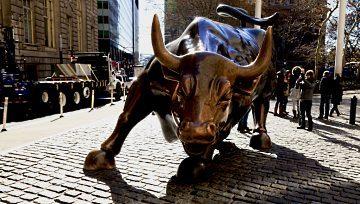
2024-07-22 13:09
AUD/USD News and Analysis Relentless AUD/USD selling continues into the new week AUD/USD sentiment: significant shift towards long positioning warrants attention The analysis in this article makes use of chart patterns and key support and resistance levels. For more information visit our comprehensive education library Relentless AUD/USD Selling Continues into the new Week New week, same vulnerabilities for Aussie longs. The Aussie dollar had previously enjoyed a period of appreciation as the RBA talked tough on inflation, even considering rate hikes at the recent meeting, while US inflation has edged lower still – prompting renewed rate hike expectations from the Fed as soon as September. However, since breaching oversold territory on the 12th of July as seen via the RSI, AUD/USD has experienced a consistent decline. While the effect of profit taking cannot be dismissed, it would appear that politics and a lower S&P 500 are weighing on the Aussie dollar right now. The rise in US polls concerning a Trump presidency has heightened the risk of further trade wars and restrictions on China – something that typically works to the detriment of the Aussie dollar as it is heavily reliant on Australia as its main trading partner. AUD/USD Daily Chart Source: TradingView, prepared by Richard Snow AUD/USD now tests the 0.6644 level which restricted bullish price action between March and May this year, with 0.6580 (April 2020) the next level to consider. Such an aggressive and immediate selloff may ease this week especially when considering US PCE is due later this week and could continue to reveal further progress in the battle against inflation (lower PCE may lead to a softer dollar). While its tough to argue against the current, short-term bearish trend, the 200-day simple moving average coincides with the 0.6580 level in what could be seen as the biggest test for AUD/USD bears to advance a pullback attempt. The Australian dollar typically exhibits a positive correlation to the S&P 500 index as the two risk assets have risen and fallen in similar fashion in the past. However, the correlation has not been as clear in recent times, as the two have actually diverged as the S&P 500 continued to soar. Both the Aussie dollar and P&P 500 Index closed lower last week, with the Aussie adding to those declines on Monday, while S&P futures point to a higher open. AUD/USD Correlation Weakening Source: TradingView, prepared by Richard Snow AUD/USD Sentiment: Significant Shift Towards Long Positioning Warrants Attention Recent retail trader data reveals a sizeable imbalance in market positioning. Currently, 64.57% of traders hold long positions, resulting in a long-to-short ratio of 1.82 to 1. Notable shifts in trader sentiment have occurred: Net-long positions: Up 10.21% since yesterday, 57.97% increase from last week Net-short positions: Down 5.36% since yesterday, 37.63% decrease from last week Source: DailyFX, IG, prepared by Richard Snow Our analysis typically adopts a contrarian approach to crowd sentiment. The current net-long positioning suggests potential downward pressure on AUD/USD prices. Given the increasing net-long sentiment compared to both yesterday and last week, combined with recent market dynamics, our outlook indicates a bearish bias for AUD/USD when viewed from a contrarian perspective. https://www.dailyfx.com/news/aud-usd-technical-outlook-charting-the-downtrend-and-potential-reversals-20240722.html
